Wine production and technology go hand in hand to assert Portugal’s wine producing status
INESC TEC is technological partner to modernise the sector
Portugal has a high potential to produce quality wines, especially due to its climate and geological conditions, wine variety and tradition in the sector. But if it is certain that the natural conditions have contributed to strengthen the country’s position as the 12th largest wine producer in the world [1], it is also true that combining technology and these innate factors is key to strengthen this status. Whether in controlling the quality of the wines, managing their commercialisation or classifying wine slots, INESC TEC has been working successfully with national institutions in order to optimise some factors associated with wines and vineyards. An example of a project in this domain is one that revolutionised the concept of wine slot, with an impact on the world’s oldest vineyard site, World Heritage – the WineSlot.

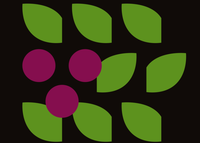
WineSlot has an impact on the Douro wine producing region
Developed by INESC TEC’s Centre for Information Systems and Computer Graphics (CSIG), together with the Porto and Douro Wines Institute (IVDP), the WineSlot aimed to standardise the concept of wine slot, as well as the use of classification management in wine slots, applied to a wine growing heritage.
INESC TEC’s participation in WineSlot, supported by the 1.4 Measure of the North Region Operational Programme (ON Programme), started in March 2007 and had two phases: a pilot project to define concepts, models and procedures to automate the management of the wine producing potential and the designations of origin in the region, and a prototype to manage the classification of wine slots, called Information System for the Douro Vineyard Site (SIV-RDD).
The pilot project made it possible to define the necessary concepts, procedures and rules to conduct surveys on the wine slots, taking into consideration the associated legal and technical aspects, guaranteeing the compatibility of the slots represented by the different entities that play a role in regulating vineyards and wine in the Douro Vineyard Site (Região Demarcada do Douro – RDD). The prototype to manage the classification of wine slots made it possible not only to automate the process of classifying wine slots, from the survey stage to the integration in the IVDP system that is responsible for managing wine slots in the Douro Vineyard Site, but also to manage the process of authorising the production of grape must, right from the 2008 harvest.
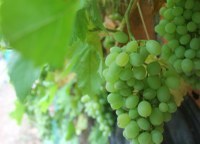

The results of this project have a great impact on the Douro Vineyard Site because they make it possible to automate the management of the wine producing potential of the designations of origin, increasing the IVDP’s capacity to control, promote and defend the designations of origin and the geographical indication of the Douro Vineyard Site. INESC TEC’s team involved in the WineSlot project included António Coelho, Artur Rocha, Lígia Silva and Lino Oliveira.
Controlling and modelling wine quality
From production to the table – the wine goes through different stages until it becomes a final product. The quality of the wines must be monitored continuously. INESC TEC also plays a key role making sure that the beverage that the consumer drinks is authentic. Combining biosensors and molecular genetics, project WineBioCode promotes a stricter quality control and detects frauds. The final goal of this project, currently being developed by INESC TEC’s Centre for Applied Photonics (CAP), is to create an optical biosensor that certifies the authenticity of the different types of grapes, by detecting DNA hybridisation processes. The project is funded by the Portuguese Foundation for Science and Technology (FCT), and developed in collaboration with the University of Trás-os-Montes and Alto Douro (UTAD), the National Institute of Biological Resources (INRB) and SOGRAPE, LDA (Sogrape Vinhos S.A.). At INESC TEC, the project is led by Pedro Jorge and José Ramiro Fernandes, both researchers at CAP.
Using different techniques to assure the quality of the wine, INESC TEC’s Centre for Industrial Engineering and Management (CEGI) is currently developing a model that will make it possible to relate different meteorological factors with the global quality of the wine throughout each harvest year. The project “Modelling the Quality of Wines in the Douro Region” is being developed by José Sarsfield Cabral, José Luís Borges and António Côrte-Real de Sousa, in collaboration with the Association for the Development of the Douro Wine producing Region (ADVID).
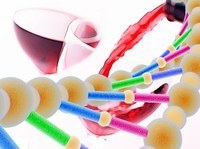
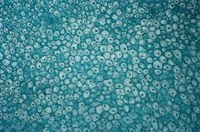
The same Centre was responsible for the project “Analysing the results of a Port Wine tasting panel”. By analysing the data collected over a number of years by one of ADVID’s tasting panels, the researchers involved wanted to create a measure of wine quality for the Douro vineyard site each year. The goal was to support a long-term analysis of the effect that climate change has on the quality of wine production in that region. José Luís Borges, Vera Miguéis and José Sarsfield Cabral were the researchers involved in the project.
Collaboration and decision support
Developing methodologies, guides and tools to help SMEs create and manage collaborative networks of organisations was the goal of the project developed by INESC TEC’s Centre for Enterprise Systems Engineering (CESE), called “RCED-High Performance Collaborative Networks in Northern Portugal”. One of the project’s case studies was the ‘Lavradores de Feitoria’ Collaboration Network, which helped the project to broaden its area of intervention to companies producing quality wines in the Douro region.
In 1999, the project ‘Lavradores de Feitoria (LdF)’ brought together 15 wine producers in the Douro region in order to value and promote the production of quality wine. The creation of this network helped solve the problems of producers in the region, namely in terms of the commercialisation of their VQPRD wines (quality wines produced in a specified region). Other than launching new brands associated with blended wines resulting from a careful selection of grapes from different vineyards, each vineyard can produce their own wines, boosting their distribution network nationally and internationally.

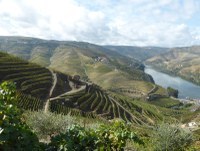
RCED analysed the case study of LdF and identified good practices that were then disseminated to different sectors. The project was promoted by INESC TEC, together with Digital Partners. The INESC TEC team was composed of researchers António Lucas Soares, Luís Carneiro and Jorge Pinho de Sousa. The project was developed between October 2005 and September 2007.
Lastly, INESC TEC also worked on another wine-related project, together with the Faculty of Engineering of the University of Porto (FEUP) and the Institute of Vineyards and Wine (IVV). The study “Isotopic Relations of National Wines 1991-1999” aimed to statistically characterise the behaviour of ethanol’s (alcohol) isotopic relations, respectively D/H1, D/H2, R and C13/C12, and the isotopic reason of O18/O16 water in Portugal. With the statistical treatment and the resulting recommendations, the goal is to allow the IVV to establish (or not) national limits for the isotopic relations in the different types of wines and origins, and to define procedures to use those limits in the event of disputes. The CEGI team participating in the study, about which a confidential report was written, included José Luís Borges and José Sarsfield Cabral.
The INESC TEC researchers mentioned in this article are associated with the following partner institutions: INESC Porto, FEUP and UTAD.
[1] Data from the Vini Portugal association regarding the year 2012 (http://www.viniportugal.pt/OSector)


